Flawed Hair Analysis Wrongly Imprisons Many
WCIJ finds nine cases in Wisconsin, among hundreds nationally.
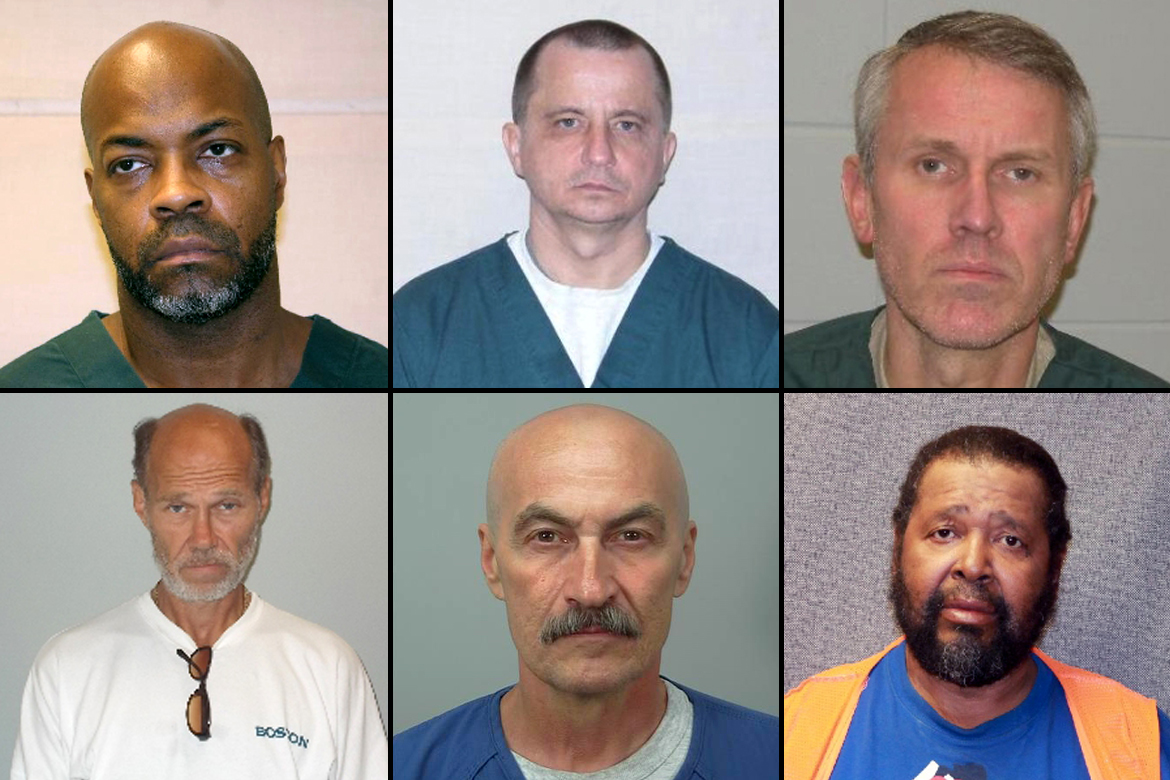
The FBI has acknowledged its hair or fiber analysis was faulty in at least 13 prosecutions in Wisconsin. The bureau is conducting a nationwide review of criminal cases involving microscopic hair and fiber analysis prior to 2000, when mitochondrial DNA testing became a routine forensic practice. Pictured here are some of the Wisconsin defendants whose cases included flawed hair or fiber comparison by the FBI or the state crime lab. Clockwise from top left, Booker Shipp, Larry Fandrich, Brook Grzelak, Roy Broussard, Richard Beranek, and Patrick Greer. Photos from the Wisconsin Department of Corrections and Dane County Jail.
In 1991, in a string of attacks, three women were sexually assaulted by a man in a ski mask in and around Baraboo, a Sauk County community just north of Devil’s Lake State Park. One victim was kidnapped after finishing her shift at a Hardee’s, bound and gagged with duct tape in the trunk of a car. The others were assaulted at knifepoint in their homes, one while her young son slept in the next room.
Two years later, then-Sauk County Assistant District Attorney Kevin Calkins charged 31-year-old Larry Fandrich with the kidnapping and sexual assaults.
Each woman’s description of her attacker — a thinly built man of medium height, with a soft voice — seemed to point to Fandrich, who had been convicted of a prior kidnapping. And during the Baraboo Police Department’s 1991 investigation, officers found a small paring knife, a jacket with a roll of duct tape in the pocket and a ski mask in Fandrich’s truck.
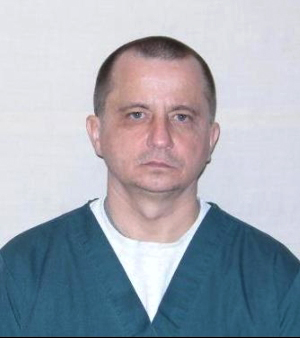
Larry Fandrich says he took a plea deal after being told that FBI forensic experts had overwhelming evidence tying Fandrich to a series of sexual assaults and a kidnapping in and around Baraboo, Wis., in 1991. The FBI has since acknowledged its analysis of hair and fibers in the case was faulty. Photo from the Wisconsin Department of Corrections.
Fandrich said he had been prepared to plead not guilty. But when state prosecutors said FBI forensic experts had overwhelming evidence tying Fandrich to the crimes, he reluctantly decided to take a deal, pleading no contest.
“I was forced to accept a plea deal, as there is no jury that would disregard an FBI expert’s testimony,” Fandrich, now 55, wrote in a letter to the Wisconsin Center for Investigative Journalism.
Among the prosecution’s forensic evidence were gray carpet fibers collected from duct tape left at two of the crime scenes, which an FBI crime lab report claimed exhibited “the same microscopic characteristics and optical properties” as the fiber samples taken from the duct tape roll seized from Fandrich’s truck.
A single pubic hair found in one victim’s underwear also showed “the same microscopic characteristics” as Fandrich’s pubic hair, according to the lab.
In 1995, after 18 months of court proceedings, Sauk County Circuit Judge James Evenson sentenced Fandrich to 50 years in prison for the crimes. Had he gone to trial, Fandrich said, he would have faced a sentence of up to 265 years. He remains incarcerated today.
Fandrich’s case is among at least 13 prosecutions in Wisconsin in which the FBI has acknowledged its hair or fiber analysis was faulty. The FBI is conducting a nationwide review of criminal cases involving microscopic hair analysis prior to 2000, when mitochondrial DNA testing became a routine forensic practice.
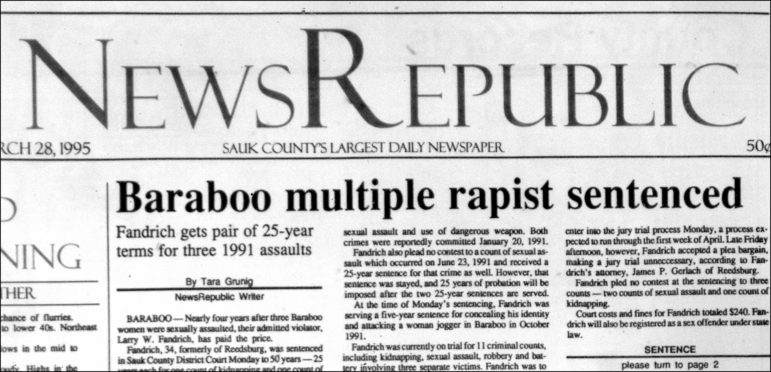
Larry Fandrich is serving a 50-year sentence for a series of sexual assaults and a kidnapping in and around Baraboo, Wis., in 1991. Fandrich says FBI findings that tied him to hair and fibers from the crimes — which the agency now acknowledges were flawed — convinced him to plead no contest rather than not guilty. Photo from the Wisconsin Historical Society.
The Center has identified seven of those cases through dozens of public records requests and a trove of documents provided by FBI whistleblower Frederic Whitehurst. In addition, there are at least two more cases in which Wisconsin State Crime Laboratory analyses tying suspects to specific hairs have been proven to be wrong by later DNA testing.
The Wisconsin cases are among hundreds nationwide that have been found to be tainted by FBI analysis that falsely implied or claimed that hairs or fibers could be matched to specific sources. The task force reviewing the cases — which includes the Innocence Project and the National Association of Criminal Defense Lawyers — has acknowledged that more than 90 percent of hair cases involve flawed testimony by the FBI.
The Center has identified defendants in Dane, La Crosse, Milwaukee, Sauk and Waukesha counties and four federal defendants whose cases included flawed hair or fiber comparison by the FBI or the state crime lab. In some of those cases, while the FBI made errors, prosecutors said the hair or fiber evidence was not a key factor in the conviction.
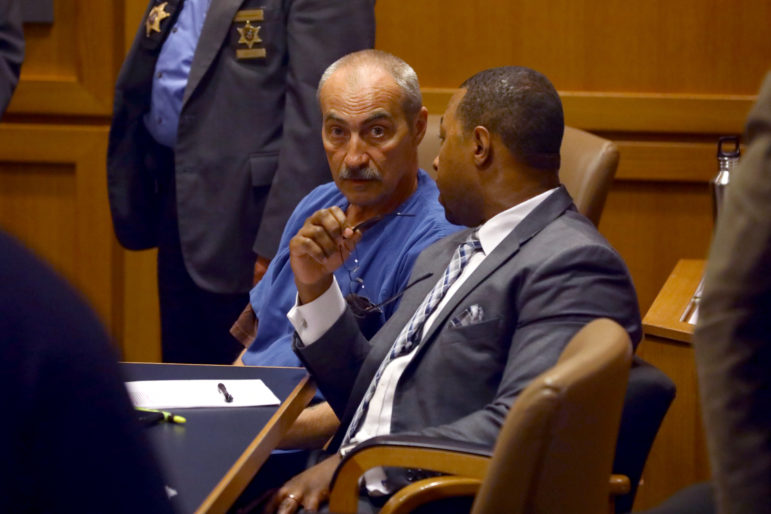
Richard Beranek is seen here at his court appearance on May 9, in Dane County Circuit Court with his attorney, Jarrett Adams of the New York-based Innocence Project. Beranek’s 243-year sentence for sexual assault was overturned after a judge agreed with the defense that the single hair that helped convict Beranek was not his. Photo by Coburn Dukehart / Wisconsin Center for Investigative Journalism.
Attempts by the Center to discover all of the cases tainted with flawed FBI hair and analysis have been thwarted by district attorneys who have invoked their power under state law to shield prosecutorial records from public view. Federal Freedom of Information Act requests to the U.S. attorneys in Milwaukee and Madison sent in March seeking records of federal cases remained unfulfilled as of mid-October.
In Dane County, the conviction of Richard Beranek was overturned in June after DNA testing found the hair the FBI claimed was a match to Beranek was, in fact, not his. He was released after spending 27 years in prison. Prosecutors, who are pursuing additional DNA testing in the case, have not announced whether they will retry him.
Few prosecutors turn over records
In May, the Center sent public records requests to all 71 of Wisconsin’s district attorneys, asking each county office for documents pertaining to cases that involved microscopic hair or fiber comparison. The Center also requested any correspondence related to the nationwide FBI review.
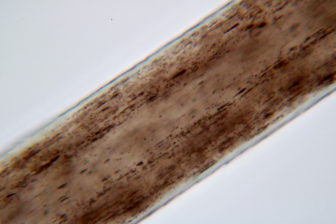
A joint project by the U.S. Department of Justice, the FBI, the New York-based Innocence Project and the National Association of Criminal Defense Lawyers is re-examining FBI analysts’ testimony and findings in thousands of cases involving microscopic hair analysis. The FBI has acknowledged most of its analysts overstated the reliability of the technique more than 90 percent of the time. This is what hair looks like under a microscope. Photo courtesy of Microtrace LLC.
About half of the district attorneys have acknowledged the records request. Several of those offices declined to fulfill the request under Richards v. Foust, a 1991 Wisconsin Supreme Court decision holding that prosecutorial files are exempt from public access under the state public records law. Others said they had no records or no system for locating such records.
Two district attorneys — Calkins in Sauk County and Tim Gruenke in La Crosse County — provided the FBI reports.
The state’s largest county, Milwaukee, released records related to two homicide cases that have undergone FBI review. Deputy District Attorney James Martin said in a letter that he would not make the FBI records available, however, because they are covered under Foust and an agreement with the FBI not to disseminate records for “purposes unrelated to criminal prosecution and investigation.”
Martin did, however, provide testimony from the two cases, noting that such trial transcripts are public records.
Milwaukee prosecution flawed
One of them involved Booker Shipp, convicted in the 1994 killing of a Glendale police officer following a masked bank robbery. His appeals have been unsuccessful. An FBI expert testified in Shipp’s case that there were “no meaningful differences” between Shipp’s hair and a hair from the mask worn by the robber who shot Officer Ronald Hedbany.
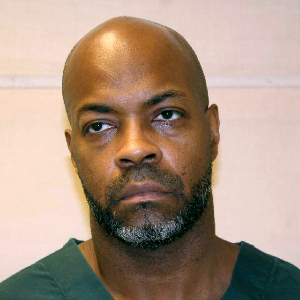
Booker Shipp says he was not aware the FBI had concluded in 2014 that its analyst made several errors in tying Shipp to hair found on a mask worn by the robber who fatally shot a Glendale, Wis., police officer. Shipp, who maintains he is innocent, is serving a life sentence. Photo from the Wisconsin Department of Corrections.
FBI analyst Harold Deadman testified that the comparison was not an “absolute identification.” But he went on to say that “the chance of going out and selecting someone at random from a population and finding that person to have the same hairs as a particular individual would be small.”
Shipp contends he is innocent. He is serving a life sentence.
Shipp said he learned about the FBI’s review of his case from the Center — nearly three years after it was completed. He got a copy after requesting one from the Milwaukee County District Attorney’s Office.
“I was shocked that the DOJ, FBI did this report back in 2014,” he said in an interview. “Everybody knows but me — and I’m sitting in jail for it.”
Milwaukee County District Attorney John Chisholm told the Center that his office had sent the review to Shipp’s trial attorney, Steven Kohn. Kohn said it would not be “appropriate” for him to comment.
“If there’s flaws in the case then, you know, that was the heart of their case right there,” Shipp said from New Lisbon Correctional Institution. “That would be huge.
“I have always maintained my innocence,” he added. “I always said it was not me.”
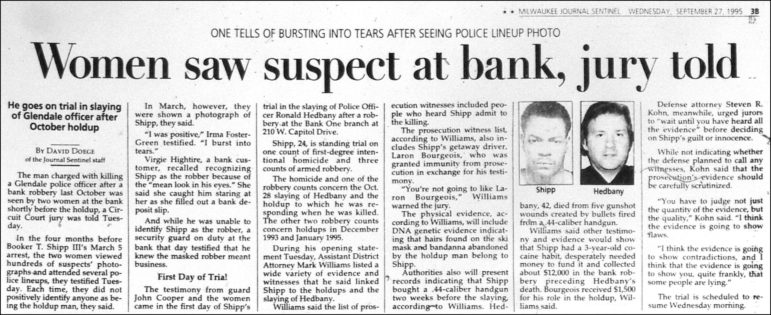
Booker Shipp’s 1995 trial in Milwaukee County Circuit Court included testimony from an FBI analyst who linked his hair to hair found on a mask left by a bank robber who later killed Glendale Police Officer Ronald Hedbany. The FBI recently acknowledged that testimony falsely implied the hair could belong to a specific individual. Photo from the Wisconsin Historical Society.
According to the 2014 letter to Chisholm, the FBI found that Deadman’s testimony was flawed in several ways. The analyst implied that the hair could be related to one individual to the exclusion of others; that his findings had a statistical weight or probability; and he used the experience of the lab to “bolster the conclusion that a hair belongs to a specific individual.” All of those, the FBI warned, “exceeded the limits of the science.”
But Chisholm said the now-retired prosecutor, Norman Gahn, who reviewed the case at Chisholm’s request, is “absolutely confident” in the jury’s verdict.
Chisholm said microscopic hair comparison played a “very minor role” in the case and that evidence linking Shipp to blood left at a related liquor store robbery and DNA from a bandanna worn by the robber was “overwhelming.”
Shipp said he is looking for an attorney to help him appeal based on the flawed testimony and “multiple, multiple things wrong with the case.”
The other Milwaukee County case analyzed by the FBI involved Jesse Anderson, who was found guilty of killing his wife after claiming the white couple had been attacked by two black men. He was murdered in prison in 1994 alongside serial killer Jeffrey Dahmer. Anderson’s attorney, Dennis Coffey, confirmed the FBI had reviewed the case but declined additional comment.
Chisholm said the FBI did not find errors in its review of the Anderson case.
Longstanding problems with analysis
By the early 1990s, when Fandrich’s case was being investigated, the FBI knew that microscopy had its limitations. Hair or fiber samples that look identical, even under a high-powered microscope, could come from a number of individuals or sources.
Twenty years later, in August 2015, the U.S. Department of Justice notified Calkins, now Sauk County’s district attorney, that the microscopic analysis in the FBI lab report in Fandrich’s case contained erroneous statements that “exceeded the limits of science” and “were therefore invalid.” Calkins provided the letter under the state public records law.

Attorney Raymond Dall’Osto says his client, Larry Fandrich, “was faced with a Himalayan climb without a rope or oxygen tanks” when he decided to plead no contest in the face of FBI hair and fiber analysis tying him to a series of rapes and a kidnapping in and around Baraboo, Wis., in 1991. The FBI recently acknowledged that analysis was flawed. Photo courtesy of Gimbel Reilly Guerin Brown.
The FBI review found that the lab report for Fandrich’s case, which implied that the pubic hair and carpet fibers tied him to the crimes, contained “inappropriate statements.”
Fandrich’s attorney, Raymond Dall’Osto, said the hair evidence was “very important” to his client’s decision to change his plea from not guilty to no contest. That, combined with the “purported DNA match,” made acquittal very unlikely, he said.
“Suffice it to say that Mr. Fandrich was faced with a Himalayan climb without a rope or oxygen tanks,” Dall’Osto said. “You cannot separate the two forms of forensic evidence and resulting opinions of the FBI. If one was knocked out or called into question, it would potentially topple the other or at least raise a substantial reasonable doubt as to the reliability of the so-called match.”
The Center also reported that 15 cases in the state involved testimony or a lab report by a Wisconsin State Crime Laboratory analyst who had been trained by the FBI in microscopic hair and fiber comparison. The state Department of Justice told the Center it has no plans to launch an independent review of any hair or fiber cases, although several other states, including Arizona, Iowa and Massachusetts, have done so.
Hair, fiber evidence limit options

The Wisconsin Department of Justice under Attorney General Brad Schimel says it has no plans to launch a review of cases involving microscopic hair or fiber comparison, despite the fact that at least three convictions in the state have been overturned after such analysis was found to be wrong. Schimel is seen here in July 2015 following an open government summit in Madison, Wis. Photo by Dee J. Hall / Wisconsin Center for Investigative Journalism.
The state’s case against Fandrich did not exclusively turn on the FBI crime lab’s microscopy work. Prosecutors also presented DNA testing of semen samples taken from the crime scenes. Dall’Osto vigorously disputed the admissibility of that DNA evidence, arguing that the FBI’s test methodology was so flawed it could not be relied upon. But that argument was never tested in court: Fandrich agreed to a plea deal.
“When a defense lawyer is faced with this, you’ve got to have a very difficult discussion with your client,” Dall’Osto said. “Do you go forward with the chance of losing on multiple counts, or do you try to cut your losses and limit the exposure and damage?”
Fandrich opted to cut his losses. “I became overwhelmed with the circumstantial evidence and the statistical numbers from the experts,” Fandrich wrote in a letter to the Center. “I feared that I would spend the rest of my life in prison, and I would never see my sons again.”
But had the defense team known about the errors in the state’s microscopic analysis evidence, Dall’Osto said, the discussion of whether Fandrich should plead no contest “would have been much different.”
As for whether he is guilty, Fandrich wrote that to qualify for parole, he must complete sexual offender treatment — one condition of which is to accept responsibility for the crimes for which he was convicted. As a result, he said, “I am unable to answer your question as to whether I am innocent of these crimes.”
Fandrich said he is hoping to petition for a sentence modification. Since his 1995 conviction, Fandrich said he has been denied parole 10 times.
“He should be out of prison now,” Dall’Osto said. “He’s been a model prisoner and should have been paroled a lot earlier. I hope some relief can be gotten for him.”
Other cases revealed
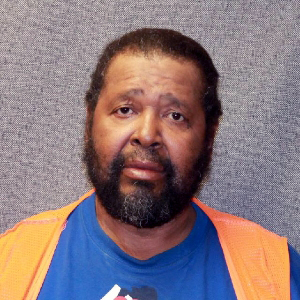
Roy L. Broussard pleaded guilty to the 1986 armed robbery of a clothing store in Brookfield, Wis. The FBI has acknowledged its analysis of hair and fibers in the case was flawed. Photo from the Wisconsin Department of Corrections.
Thousands of pages of documents gathered by Whitehurst, the FBI whistleblower, and provided to the Center identify more Wisconsin cases that have been reviewed.
Among them was the prosecution of Clarence and Roy L. Broussard for the 1986 armed robbery of a clothing store in Brookfield. Another involves Brook Grzelak, who was federally prosecuted for a 1982 bank robbery in Abrams, in Oconto County. In these cases, microscopy work was performed by FBI crime lab analyst Michael Malone, whose misuse of the technique prompted the agency’s long-running review of hair and fiber cases.
Efforts to reach the Broussards, who both pleaded guilty to the robbery, were unsuccessful. In a 2002 letter, the U.S. Department of Justice asked then-Waukesha County District Attorney Paul Bucher to determine whether Malone’s work was “material” to securing the Broussards’ convictions. Bucher found it was not.
Grzelak wrote in a letter to the Center that Malone’s work did not affect his decision to plead guilty to the bank robbery charge in U.S. District Court in Milwaukee. Grzelak said he was not aware that hair or fiber analysis had been used as evidence against him. He currently is incarcerated in Michigan for burglary-related counts.
“I was young and stupid, didn’t take my attorney’s advice and pled guilty to get it over with,” he wrote.
Research intern Emma Schatz contributed to this report. The nonprofit Wisconsin Center for Investigative Journalism (www.WisconsinWatch.org) collaborates with Wisconsin Public Radio, Wisconsin Public Television, other news media and the UW-Madison School of Journalism and Mass Communication. All works created, published, posted or disseminated by the Center do not necessarily reflect the views or opinions of UW-Madison or any of its affiliates.
Flawed Forensics
-
Conviction Overturned After Flawed Hair Analysis
 May 22nd, 2018 by Dee J. Hall
May 22nd, 2018 by Dee J. Hall
-
State Won’t Review Flawed FBI Hair, Fiber Cases
 Nov 3rd, 2017 by Katherine Proctor
Nov 3rd, 2017 by Katherine Proctor
-
Justice Project Questions Murder Conviction
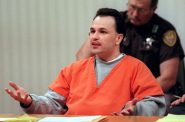 Sep 10th, 2017 by Dee J. Hall/Wisconsin Center for Investigative Journalism & Courtnee Brinker, Abhinanda Datta, Shahzeb Hashim, Lauren Jensik, Holly Kane, Hannah Moulthrop and Ezra Solomon/The Medill Justice Project
Sep 10th, 2017 by Dee J. Hall/Wisconsin Center for Investigative Journalism & Courtnee Brinker, Abhinanda Datta, Shahzeb Hashim, Lauren Jensik, Holly Kane, Hannah Moulthrop and Ezra Solomon/The Medill Justice Project





















